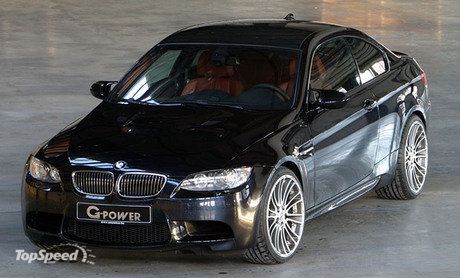Next to the 5-Series GT Concept at the Geneva Motor Show, BMW will also show its new Performance Power Kit, which ups the boost on its 3.0-liter twin-turbo engine. BMW is offering this for the 1-Series and the 3-Series (i.e 135i and 335i cars), sorry 535i.
As a complement to the some of the performance upgrades already available from BMW, the engine’s output is increased by 20 hp, bringing the total to 320 hp. The peak torque is increased to 317 lb-ft on manual gearbox models, and 332 lb-ft on models with automatic transmission.
A BMW 335i sedan with the BMW Performance Power Kit accelerates from a standstill to 100 km/h (62mph) in 5.4 seconds, which is 0.2 seconds faster than its regular production counterpart. And acceleration from 80-120 km/h (50-75 mph) is 0.5 seconds faster than in the regular model.
Press release
Going beyond the maximum limit, re-defining the conventional - precisely these are the challenges successfully mastered by the engineers responsible for developing the BMW Performance Power Kit. The result is an increase in output on the straight-six power unit featured in the BMW 135i Coupé, the BMW 135i Convertible, the BMW 335i Saloon, the BMW 335i Touring, the BMW 335i Coupé, and the BMW 335i Convertible.
On all of these models the BMW Performance Power Kit increases engine output by 15 kW/20 hp to 240 kW/326 hp, boosting maximum torque to 450 Newton-metres/332 lb-ft. On the road the most important result of this enhancement of engine power is significantly faster acceleration and flexibility the driver will clearly notice and enjoy on all models.
The power unit further upgraded by the BMW Performance Power Kit is already the most powerful six-cylinder within the wide range of BMW engines. Featured in the top versions of both the BMW 3 Series and the BMW 1 Series, this outstanding power unit comes with Twin Turbo Technology and High Precision Injection, offering maximum output in standard trim in the BMW 3 and BMW 1 Series of 225 kW/306 hp and maximum torque of 400 Newton-metres/295 lb-ft.
In the BMW Performance Power Kit this top-of-the-range engine now enters a new dimension of engine power, the BMW Performance Power Kit being made up of software and hardware components perfectly matched to one another in their functions and specially developed for the 3.0-litre straight-six.
Appropriate modifications in engine management have a positive effect on the development of power, an additional radiator outside of the engine itself as well as appropriate air flow ducts and a high-performance fan on the main radiator serving to adjust the engine to the change in thermal conditions.
Apart from the increase in maximum power to 240 kW/326 hp, the BMW Performance Power Kit boosts peak torque to 430 Newton-metres/ 317 lb-ft on manual-gearbox models and an even more significant 450 Newton-metres/332 lb-ft on models with automatic transmission.
On the BMW 335i Coupé and the BMW 335i Convertible, the BMW Performance Power Kit may also be combined with BMW’s seven-speed automatic sports transmission complete with double-clutch operation.
Whatever combination he chooses, the driver will always enjoy a significant increase in power and performance clearly confirmed by actual measurements. As an example, the BMW 335i Saloon with the BMW Performance Power Kit accelerates from a standstill to 100 km/h in 5.4 seconds, thus completing this standard sprint 0.2 seconds faster than its regular production counterpart. And acceleration from 80-120 km/h (50-75 mph) even comes 0.5 seconds faster than in the regular model.





































